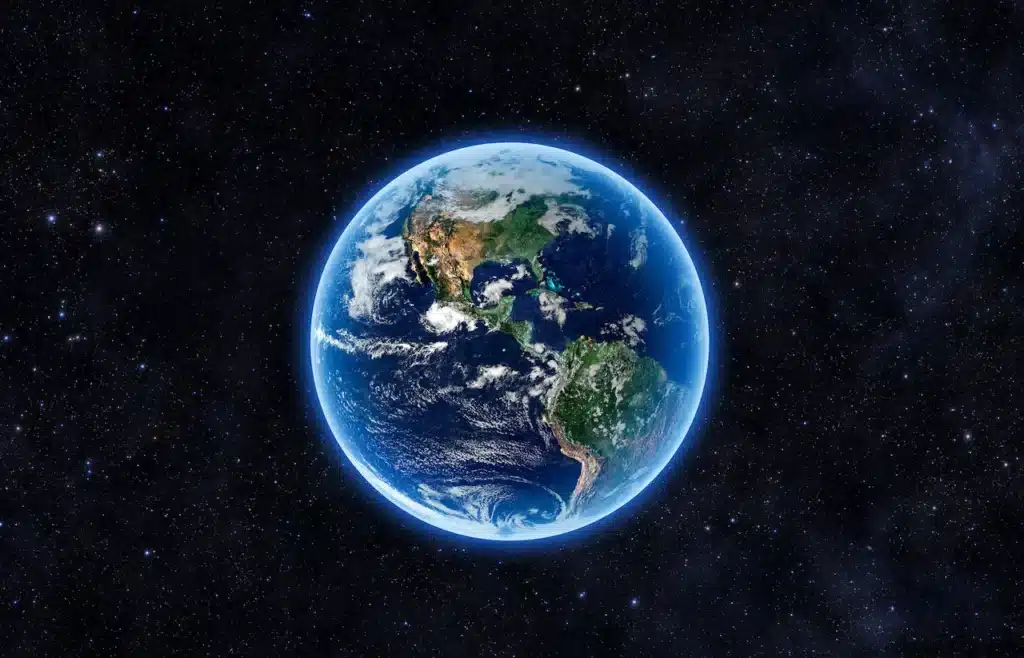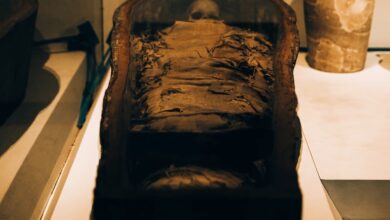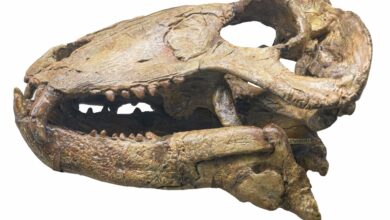How Was Earth Formed
A cloud of dust and gas left behind by ancient stars started to spiral and collapse around 4.6 billion years ago in a quiet part of the Milky Way Galaxy. Our Sun and the disk of matter that eventually gave rise to planets were born from this cosmic chaos. Earth was one of them, a planet that would eventually become home to continents, oceans and life.
How was Earth formed? Earth’s evolution from a cloud of swirling stardust into the vibrant blue planet that we see today has been far from peaceful. The journey involved many collisions, violent impacts on other rocky bodies and the formation of the Moon. Earth developed an atmosphere and liquid water as it cooled over time.
Scientists are still trying to unravel the complicated processes that formed our planet. They study meteorites, exoplanets and the scars on the Earth’s surface to piece together the dramatic origin story. Understanding Earth’s formation not only helps us understand our history, but also allows us to search for other planets that may be habitable in the universe.
Earth’s Formation
To date, we have discovered thousands of exoplanets. We live in a solar system with seven other planets. Scientists are still divided on how planets such as Earth form.
There are currently two main theories about planet formation: the disk instability model and the core-accretion model. The core accretion theory suggests that planets form gradually. Small particles in the protoplanetary disc collide and stick together, forming larger and larger bodies. The core accretion model suggests that planets form slowly, with small particles in the protoplanetary disk colliding and sticking together to create larger and larger bodies. This is best for rocky worlds such as Earth. The disk instability model suggests that planets were formed quickly when the gas and dust disc around the young Sun was gravitationally unstable and collapsed into massive planets. This theory may explain the existence of gas giants.
Scientists now believe Earth’s formation was complicated by violent collisions with protoplanets. For example, the Moon likely formed when a body the size of Mars (Theia) slammed against the early Earth.
Researchers study our solar system as well as exoplanets that orbit other stars to unravel these mysteries. Observations of young stars, asteroid belts and meteoritic materials provide important clues to the processes that formed Earth and other planets over 4.5 billion years ago. Even after decades of research, there are still questions about how Earth got to have the perfect conditions for life while other planets didn’t.
When and how did Earth begin to form?
Scientists believe that the Earth’s history began around 4,6 billion years ago during a turbulent time following the birth of the Sun. At that time, the solar system was a rotating disk of gas and dust, called a proplanetary disk, left over from the Sun’s formation. This disk was filled with heavier elements, such as helium and hydrogen, that were formed in previous generations of stars. These materials became the basis for planets.
In this spinning disk, dust and ice particles began to adhere together by electrostatic forces. They formed larger clumps. These particles grew into boulders as they collided. Over hundreds of thousands of years, these boulders kept combining to form larger rocky bodies called planetesimals. These could be as large as hundreds of miles.
The planetesimals with the most mass and gravity were able to pull and attract nearby material. This triggered a period where they grew at an exponential rate. These collisions were violent and frequent, releasing huge amounts of heat. Some impacts were so intense that they melted protoplanet interiors. This allowed heavier elements, like nickel and iron, to sink into the core, forming metallic cores. Lighter materials, on the other hand, floated outward, creating rocky crusts and mantles. The internal structure of the early planets was shaped by this process of differentiation.
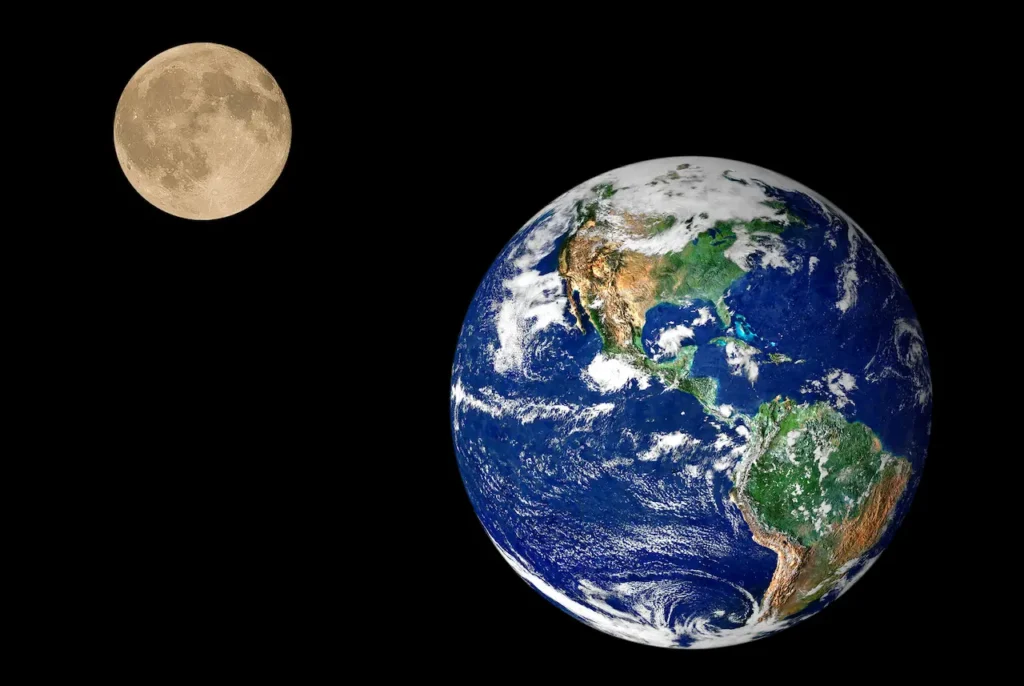
Throughout tens and millions of years, several dominant protoplanets appeared. Earth formed through numerous high-speed collisions. About 4.5 billion years ago, one of the most important collisions was with a body about the size of Mars named Theia. This catastrophic event ejected debris in orbit around Earth, which ultimately coalesced into the Moon.
Earth was nearly the size it is today 4.4 billion years ago. The Earth’s surface was still molten, but as it cooled, the thin crust started to form. The first oceans were formed when water vapour from volcanic gases condensed.
Theories About Earth Creation
Core-accretion Model
The core-accretion model is the first and most widely accepted hypothesis. It provides a good explanation for the formation of Earth, as well as other terrestrial planets. This process occurs when dust particles from the protoplanetary disk surrounding a young, bright star are glued together by electrostatic forces and gradually form larger clumps. Over millions of years, these clumps grow into planetesimals, kilometre-sized bodies that collide and merge under gravity. These clumps eventually grow into full-sized, rocky planets. This model is unable to account for giant planets such as Jupiter and Saturn.
Disc Instability Model
The second theory is called the disc instability model and suggests a faster process. In this scenario, the gas and dust disks around a young, massive star are gravitationally unstable, and they collapse into dense, large clumps. These clumps can contract quickly into gas giants. This could solve the problem of how planets massive enough to support life can form before the disk dissolves.
Pebble Accumulation Theory
A third idea, the pebble accumulation theory, has been proposed in recent years to bridge the gap between these two models. This theory emphasises the role of “pebbles” that are between centimetres and metres in size, drifting through the disk. These pebbles, which are accreted as planetesimals grow, deliver material more efficiently than was previously believed. This allows both terrestrial planets and giant planet cores to form faster than thought. This mechanism helps to explain the patterns observed in exoplanet systems, as well as differences in composition between planets within our solar system.
These theories are complementary, and observations of exoplanets and young star systems help scientists improve their understanding of the process by which diverse planetary systems emerge from cosmic dust.
What was the appearance of early Earth?
Earth’s surface was covered by a “magma ocean” instead of oceans and continents. This layer of molten rock, hundreds of miles deep, was erratic, harsh, and unlike the blue-green world we know today. Earth was covered in a “magma sea”, a layer of molten rock hundreds of miles thick. The collision with Theia – a protoplanet the size of Mars – released enormous energy, which caused the Earth to be in a fiery state. At this stage, any water present could not have formed seas or large lakes. It remained in the air as dense steam mixed with sulphur gas, carbon dioxide and other volatile substances, creating a thick, toxic haze.
The young Sun, which was much more volatile back then, added to this horrific scene. It was capable of destroying atmospheres with its intense solar wind and ultraviolet radiation (UV). The early Earth’s atmosphere could have been lost several times before stabilising.
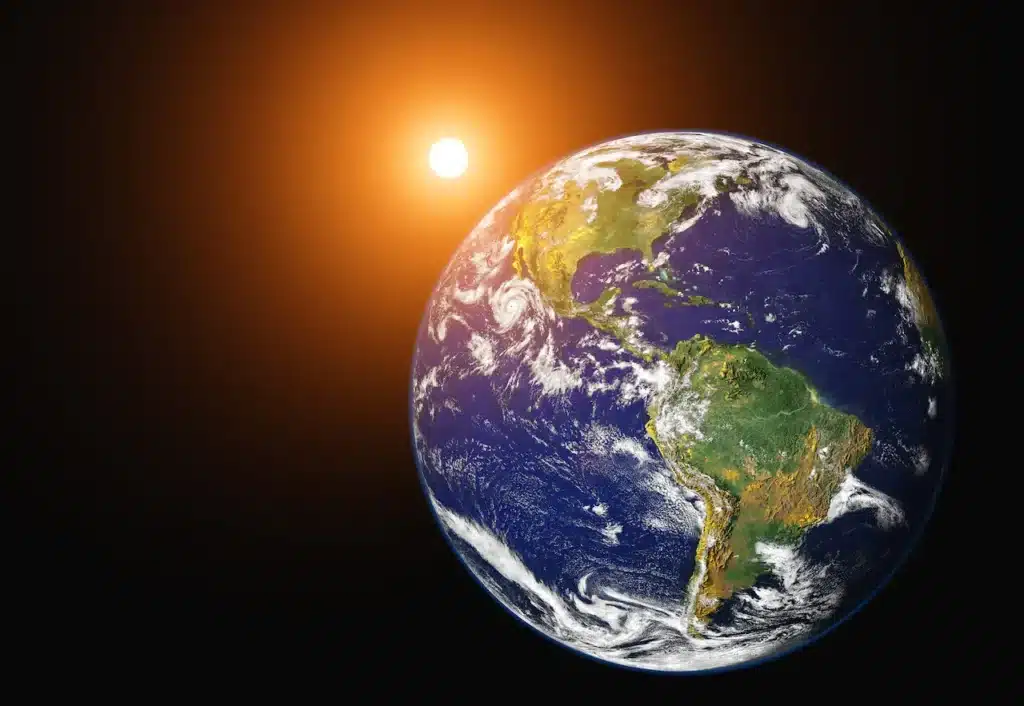
Earth began to cool over millions of years. The magma sea hardened to a thin, brittle surface, and the Earth’s first solid surface appeared. Volcanic activity was rife, releasing gases such as water vapour and carbon dioxide to help rebuild the atmosphere. The Late-Heavy Bombardment may have brought additional water and organic molecules to the planet by way of icy comets or water-rich asteroids that slammed into the young world. These impacts contributed not only to Earth’s seas but also provided the planet with the necessary ingredients for life.
The cooling and reworking of Earth’s surface set the stage for Plate Tectonics – the system of moving crustal ‘plates’ that reshapes Earth’s surfaces over geologic time. This process creates new crust at volcanic ridges, where plates separate, while the old crust, including rocks, water and carbon dioxide in minerals, is dragged into the mantle by subduction zones, where plates collide. This recycling of Earth’s crust and atmosphere helps to regulate the planet’s temperatures, maintaining carbon dioxide levels while maintaining a stable climate over billions of years.
Scientists have argued that it is a crucial ingredient in the creation of life. A planet without it could suffer from a runaway greenhouse like Venus, or lose its entire atmosphere like Mars. Plate tectonics is not just about cooling. The size of the planet, its internal heat and the materials that it inherited when formed can all influence the development of plate tectonics.
Earth is unique among planets in that it has active plate tectonics and abundant surface waters. These two features may be crucial for supporting life. Scientists can learn more about exoplanets by studying their composition. This will help them determine if our planet is unique or merely one of many with a similar geologic cycle.
Conclusion
Earth’s formation was neither a simple nor a peaceful process. It was marked by violent beginnings and fiery collisions. Our planet evolved from a spinning disk of dust and gas to a molten globe shaped by cosmic impact. Earth’s dynamic systems, like its plate tectonics, and protective atmosphere continue to remind us of the fact that this planet is still alive and constantly changing. Understanding the origin story of Earth not only enhances our appreciation of its uniqueness but also helps us to search for other planets in the vastness and diversity that is the universe.
